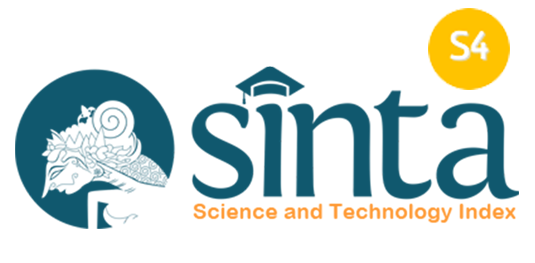Educational and Institutional Barriers to Indigenous Language Preservation in Bangladesh: Challenges and Policy Implications
Abstract
Keywords
Full Text:
PDFReferences
Ahmed, A. (2024). Distractive language education policies and the endangerment of Indigenous languages in Bangladesh. Current Issues in Language Planning, 2024, 1-16.
Ali, M. Y., Chowdhury, M. A. H., Sheema, M. K., Rahim, M. A., Akhtar, M. R., Al Imran, M., Mahatab, M. Z. I., Alam, M. J., Javed, A., and Sarker, M. S. (2016). Problems of ethnic Paharia people in Bangladesh. IOSR Journal of Humanities and Social Science, 21(4), 39-44.
Awal, A. (2019). Indigenous languages in Bangladesh: A sociolinguistic study. International Journal of Applied Research, 5(9), 318-325.
Awal, A. (2024). Ensuring linguistic sustainability in Bangladesh: Challenges and approaches. DIALOGICA Revistă de studii culturale și literatură, 6(1), 38-45.
Beg, T. H., Khan, S., Afrina, T., Hossain, M. S., and Zayed, N. M. (2020). Socio-economic instance of ethnic group in Bangladesh: A Case Study of Dhaka City. International Journal of Accounting and Finance Review, 5(2), 32-39.
Bhuiyan, A. A. M. (2016). Indigenous languages in Bangladesh: Loopholes behind the scene. Indigenous Policy Journal, 27(3), 1-17.
Faruk, M. O., and Rosenbaum, S. (2022). The mental health consequences of indigenous language loss. The Lancet Psychiatry, 9(10), e46.
Haque, M. S., Al Mamun, S. A., and Anis, M. A. R. (2018). The present situation of minority languages In Bangladesh: A new hope. Journal of Science and Technology, 8(1), 137-142.
Hasan, N., Bao, Y., and Miah, S. J. (2022). Exploring the impact of ICT usage among Indigenous people and their quality of life: operationalizing Sen’s capability approach. Information Technology for Development, 28(2), 230-250.
Hossain, A. N. M. Z. (2023). Educational crisis of Rohingya refugee children in Bangladesh: Access, obstacles, and prospects to formal and non-formal education. Heliyon, 9(7), e18346.
Islam, M. M. (2020). Humanistic values of indigenous languages in Bangladesh. RUNAS. Journal of Education and Culture, 1(1), 2.
Khan, M. R. (2017). Linguistic diversity and the threat of language endangerment in Bangladesh. Journal of South Asian Languages and Linguistics, 4(2), 150-168.
Kolancali, P., Hodgkiss, A., Mathers, S., Hewitt, E., Nag, S., and Murphy, V. (2024). In between multilingualism and monolingualism: exploring language maintenance and shift among Bangladeshi households in England. Journal of Multilingual and Multicultural Development, 2024, 1–22.
May, S. (2023). Linguistic racism: Origins and implications. Ethnicities, 23(5), 651-661.
Rahman, M. M., Shindaini, A. J. M., and Abdullah, A. B. M. (2023). Provision of education to Rohingya refugee children in Bangladesh: exploring the forms of discrimination and intersectionality. Asia Pacific Education Review, 24(3), 433-445.
Rahman, S. A. (2023). Extinction of indigenous language in Bangladesh. International Journal of Research and Innovation in Social Science, 7(4), 347-355.
Reza, F., and Ullah, M. (2023). Preserving and promoting indigenous languages of ethnic minorities in Bangladesh: A strategic planning framework. Prithvi Academic Journal, 2023, 120-135.
Sultana, A. (2024). What about the indigenous languages of the plains?: The case of Kurukh in Bangladesh. Journal of Language, Identity and Education, 2024, 1-17.
Sultana, S. (2023). Indigenous ethnic languages in Bangladesh: Paradoxes of the multilingual ecology. Ethnicities, 23(5), 680-705.
Uddin, M. E. (2017). Disparity in family status attainment between the majority and minority ethnic groups in Bangladesh. International Journal of Social Economics, 44(4), 530-546.
Van Schendel, W. (2022). Rebuffing Bengali dominance: postcolonial India and Bangladesh. Critical Asian Studies, 55(1), 105–135.
DOI: https://doi.org/10.17509/ijomr.v5i1.81385
Refbacks
- There are currently no refbacks.
Copyright (c) 2025 Kantor Jurnal dan Publikasi, Universitas Pendidikan Indonesia (UPI)

This work is licensed under a Creative Commons Attribution-ShareAlike 4.0 International License.
Indonesian Journal of Multidiciplinary Research (IJOMR) is published by Universitas Pendidikan Indonesia (UPI)















